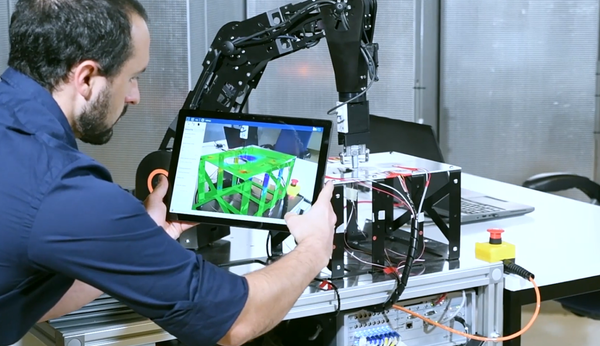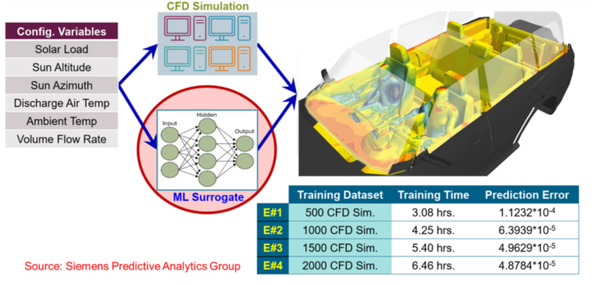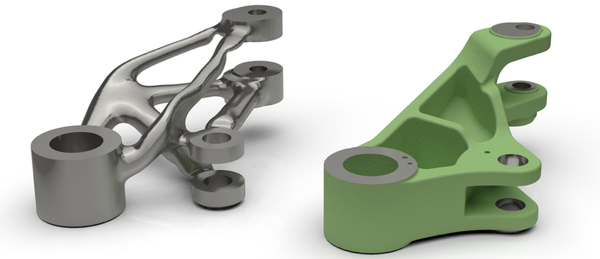Five Trends That Will Define Simulation and Test in 2023
These trends in simulation and test are set to deliver greater innovation and shorter lead times.
January 11, 2023

Stephen Ferguson, director of marketing for Simcenter, Siemens Digital Industries Software
As we enter 2023, the world economy is still recovering from the after-effects of COVID-19 and is in the midst of an energy crisis caused by the ongoing conflict in Ukraine. Consequently, the world sits on the brink of recession due to ongoing supply chain issues, rampant inflation, a worldwide skill shortage (particularly in professional engineering disciplines), and unprecedented energy insecurity. At the same time, world governments, manufacturers, and energy suppliers are desperately trying to reduce greenhouse gas emissions to avoid the worst consequences of the climate crisis.
During previous economic crises, even when R&D budgets have been cut, engineering simulation has played a key role in stimulating the economy through increasing innovation, reducing development lead times, and improving productivity. I predict that this crisis will be no different. Here are five key trends that I think will define the engineering simulation industry in 2023.
1, The (Executable) Digital Twin
In the 2018 Gartner Hype Cycle, digital twins occupied the very top of the “peak of inflated expectations” (the state of maximum hype). The Hype Cycle predicts that, after this point, new technologies inevitably plunge into the “trough of disillusionment” (where interest wanes as early adopters fail to realize the promised potential) before hopefully emerging onto the “plateau of productivity” (mainstream adoption). Gartner predicted that the digital twin was 5 to 10 years from maturity. That time is now.
Although you could argue that digital twins have been around for a while, as initially conceived, most digital twins were highly complex - capturing all of the relevant physics - but also complicated, involving the interaction between lots of different software and hardware systems.
In 2023, the digital twin concept is evolving into something much slicker and incredibly practical: the executable digital twin (or xDT). In simple terms, the xDT is the digital twin on a chip. The xDT uses data from a small number of sensors embedded in the physical product to perform real-time simulations using reduced-order models. From those small numbers of sensors, it can predict the physical state at any point on the object (even in places where it would be impossible to place sensors).

The xDT allows operators to monitor the performance of an asset over its entire lifetime, more than that, the executable digital twin adapts and learns from its environment. Not only does this allow the asset to evolve in response to changing operating conditions, but it also allows operators to spot problems before they even occur and schedule appropriate maintenance. The net result is better-performing, more robust products with lower operating costs.
2. Artificial Intelligence and Machine Learning
In 2023, engineers will increasingly use machine learning and artificial intelligence to amplify an individual engineer’s knowledge, increase the amount of learning provided through simulation and tests, and transfer accumulated knowledge between projects.
For example, Simcenter customers are beginning to use machine learning to scan the results of thousands of previous simulations, training an algorithm to identify those flow features (or stress concentrations or whatever) that significantly influence their product performance. More impressive is that ML-trained algorithms can recognize things that even the most experienced engineer might spot, increasing simulation-generated data's overall value. In other examples, AI and ML are used to identify and categorize individual parts in large CAD assemblies, saving many hours of valuable engineering time.

Although some will inevitably argue that artificial intelligence will eventually supplant human engineers, I disagree. In 2023, AI and ML will help engineers to perform more simulations and extract more useful information from each simulation. It will also enable engineers to concentrate on making decisions based on simulation data rather than performing repetitive and mundane tasks, simultaneously increasing productivity and innovation.
3. Model-Based Systems Engineering
Today’s complex products use a combination of electronics, software, and mechanics, which creates complex cross-product interactions that need to be managed. Model-based systems engineering (MBSE) is an approach to engineering that helps us manage product complexity, hopefully ensuring that complex things don’t have to be complicated.
In January 2020, NASA reported that MBSE has been “increasingly embraced by both industry and government as a means to keep track of system complexity” and that MBSE “allows the engineer to represent the system in a comprehensive computer model allowing for better traceability, tracking, and information consistency.”
MBSE helps the decision-making process by allowing engineers to understand the complex interactions between systems and to identify the critical factors that drive a system’s behavior. MBSE puts modeling and simulation at the heart of the system design process, meaning that individual components and sub-systems no longer have to be considered in isolation and can be designed and developed with the whole system's performance in mind.
4. Additive Manufacturing and Generative Design
A few years ago, I was lucky enough to sit down with some of the original pioneers of the simulation industry (in both FEA and CFD). I was surprised that, in the early 1980s, these pioneers envisioned manufacturing, not product design, as the best use case for simulation because "the cost of producing any product is about 10% design, 10% marketing, and 80% manufacturing." In 2023, this vision will finally become a reality as manufacturers use simulation to implement and optimize additive manufacturing processes.
A consequence of the rise in additive manufacturing is the birth of generative design, in which product geometries evolve directly from simulation rather than from the hand of a human CAD designer. In 2023 additive manufacturing, free from the constraints of traditional processes will allow engineers to finally manufacture the sort of simulation-optimized products that they have been designing for years.

5. Optimized Digital Materials
Large technological advancements are almost always dependent on the creation (or discovery) of novel materials. Revolutionary developments in material science enable the next generation of technological advancement.
As engineers, we tend to take materials for granted. In most engineering projects, materials are “a given,” defined at the start of the design process, and rarely changed throughout it. We are prepared to tweak every geometric parameter in the search for optimal engineering solutions, but materials are treated as a constraint rather than a degree of freedom.
The recent development of “digital materials” that can be designed, analyzed, and optimized via simulation changes this paradigm forever. It unlocks endless possibilities for technological and cultural development.

In 2023, digital materials will begin to unlock unprecedented collaboration between materials scientists and product design engineers and allow them to develop the right material for the right application every time. For the first time in the history of our species, materials development will be able to progress at the same pace as engineering innovation. Some of those digital materials will play a key role in reducing our society’s dependence on fossil fuels.
Of course, even for those of us involved in the simulation game who make daily predictions performance of proposed engineering products, forecasting the future is a difficult task. In the words of Samuel Goldwyn, “Only a fool would make predictions—especially about the future.” We’ll only know exactly how foolish these predictions are in a year.
Stephen Ferguson is the director of marketing for Simcenter at Siemens Digital Industries Software. He is a fluid-dynamicist with more than 25 years of experience in applying advanced simulation to the most challenging problems that engineering has to offer for companies such as WS Atkins, BMW and CD-adapco and Siemens.
You May Also Like


